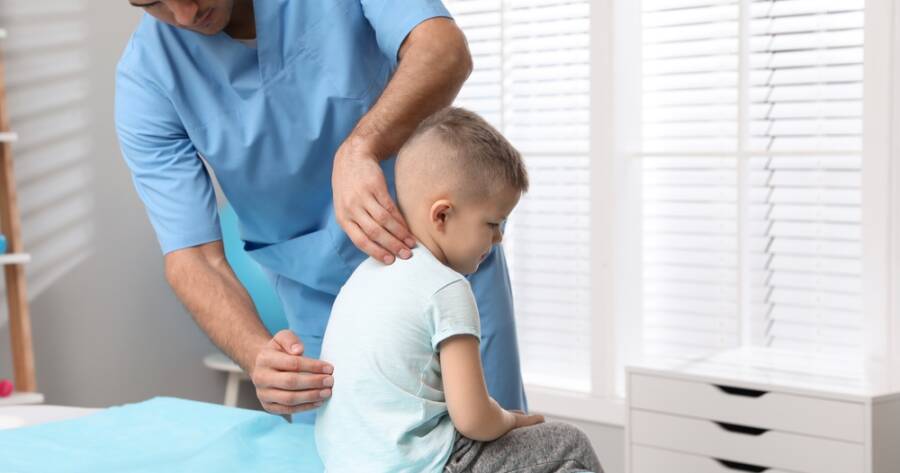Scoliosis is an abnormal curvature of the spine. It can affect a child’s overall health and development. Fortunately, you can learn everything you need to know about scoliosis in children with a search online right now.
Understanding scoliosis in children is the first step in ensuring their well-being and optimal development. It’s essential for parents and caregivers to be informed about this condition for early intervention.
What Is Scoliosis in Children?
Scoliosis in children is a deformity where the spine curves sideways. It’s most commonly diagnosed in children aged 10-15. The condition can vary in severity, with some children experiencing mild changes and others facing significant spinal deformities. Early detection is vital for effective management.
Types of Scoliosis in Children
Children can develop different types of scoliosis. The most common is idiopathic scoliosis, which has no known specific cause, however, it can run in families.
Congenital scoliosis results from spinal malformations. This type is very rare and is detected at birth. Neuromuscular scoliosis is caused by abnormalities in the muscles and nerves. It’s associated with conditions like cerebral palsy, spinal bifida, and muscular dystrophy.
Warning Signs of Scoliosis in Children
Early detection of scoliosis in children is critical. Luckily, there are warning signs you can watch for.
Signs of scoliosis include uneven shoulders, constantly leaning to one side, a protruding ribcage, elevated hips, prominent shoulder blades, and uneven waist. Parents may also notice clothes fitting awkwardly or unevenly on their child. Regular medical check-ups can help in early identification.
Causes and Risk Factors
The cause of scoliosis depends on the type. While the exact cause of idiopathic scoliosis in children is unknown, factors like genetics may play a role. Congenital scoliosis, on the other hand, arises from in-utero spinal malformations. Neuromuscular conditions can also lead to scoliosis. Early monitoring is important for children at risk.
Treatment Options for Child Scoliosis
Treatment depends on the severity of the curve, the child’s age, and how much more the child will grow. Your child’s doctor can determine the severity through imaging tests like X-rays. From there, they will develop the right treatment plan for your child.
Some cases of scoliosis are so mild, they will only require monitoring. However, curves over 25 degrees may require treatment.
Bracing is a common treatment for moderate scoliosis. In severe cases, surgery might be recommended. Physical therapy and regular monitoring are also key parts of managing this condition in children. Each case is unique, so it’s important to follow the guidance of your child’s medical team.
Impact on a Child’s Life
Living with scoliosis can affect a child’s life in various ways. It may cause physical discomfort and affect self-esteem. However, with proper treatment and support, most children with scoliosis lead active, healthy lives. Encouragement and understanding from parents and peers are vital.
Supporting Children with Scoliosis
Support for children with scoliosis includes both medical and emotional care. Parents should ensure consistent treatment and follow-up but providing emotional support is just as important. Parents can do this by encouraging a normal, active life (if advised by their doctor). Some sports that help scoliosis include swimming and gymnastics. These sports can help improve core strength, and boost flexibility. Open communication about the condition, including educating your child, also helps children cope better.
The Role of Schools and Teachers
Schools and teachers also play a significant role in supporting children with scoliosis. Awareness and accommodations in seating or physical activities can make a big difference. Schools can also provide a supportive environment that helps in managing self-esteem issues related to scoliosis.
Prevention and Screening
While preventing scoliosis isn’t always possible, early screening is key. Regular check-ups can detect scoliosis before it becomes severe. Moreover, awareness of family history and watching for signs can prompt early intervention, which is crucial for effective treatment.
Advances in Treatment and Care
Advancements in medical science have improved the treatment and care of scoliosis in children. Innovative bracing techniques and less invasive surgical options are available. Be sure to discuss all treatment options with your doctor to ensure your child is getting the best treatment possible. These advancements have enhanced outcomes and reduced the impact on a child’s life.
Learn More About Scoliosis in Children Today
Gaining knowledge about scoliosis in children is a critical step in managing the condition effectively. With the wealth of information available online, parents and caregivers can access resources for understanding, treating, and supporting children with scoliosis. Start your search today and explore these resources to ensure the best care and support for your child living with scoliosis.
